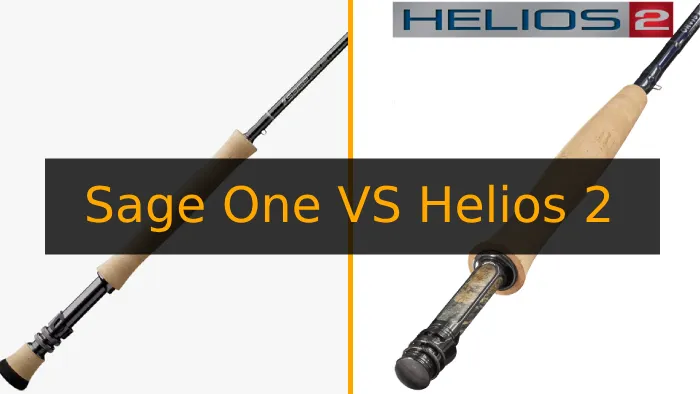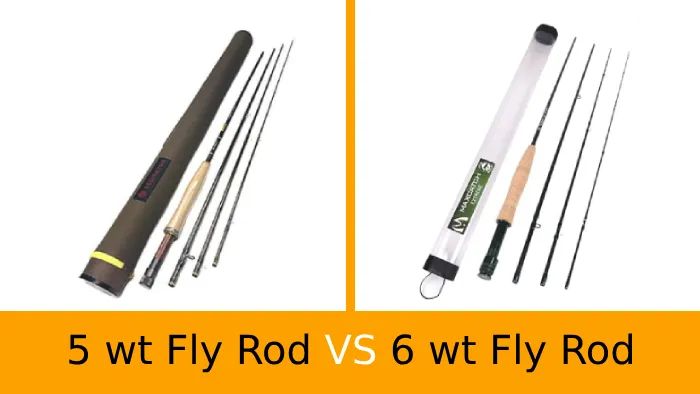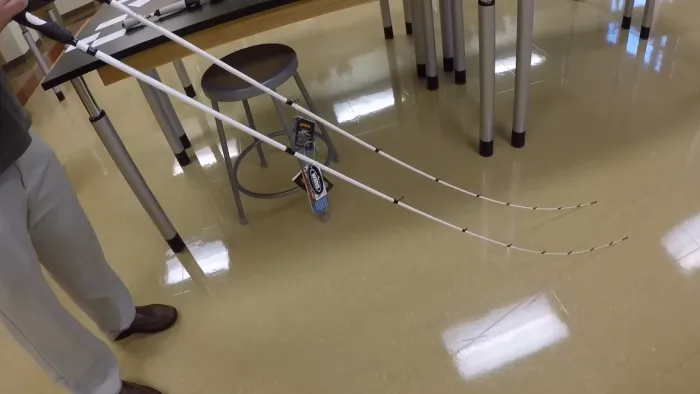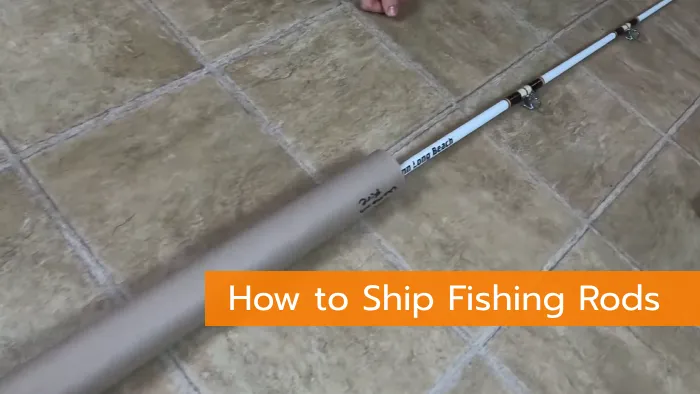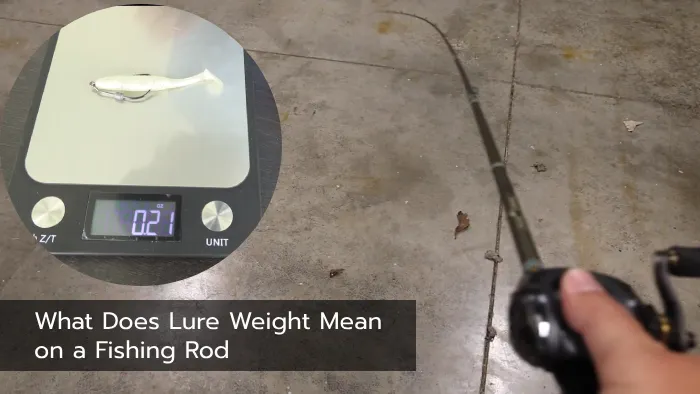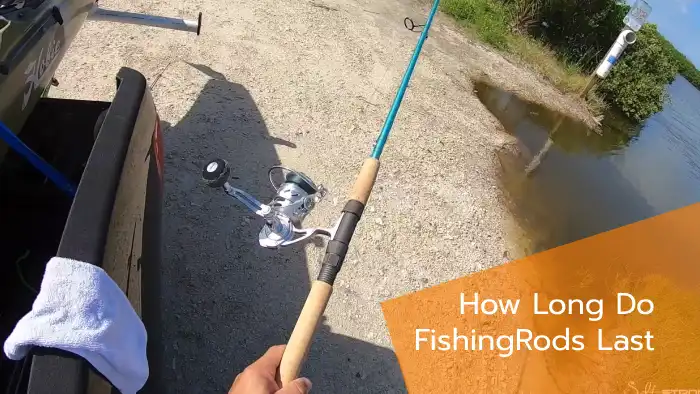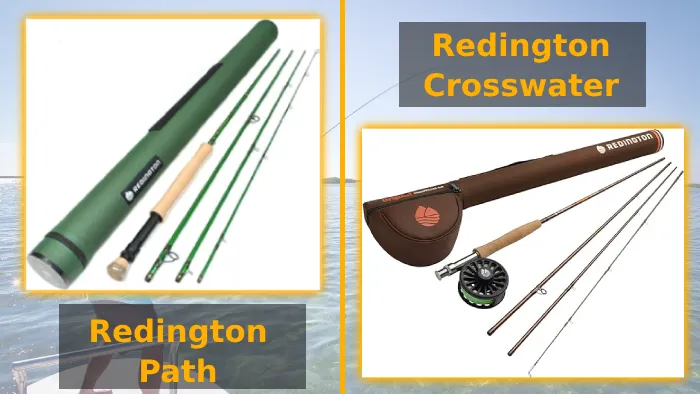Sage ONE vs Helios 2 Fly Fishing Rods: 6 Differences You Must Know
Fly fishing is a popular outdoor activity requiring proper equipment, including a high-quality fly rod. Two of the most popular fly rods on the market are the Sage ONE and the Orvis Helios 2. Although they’re known for their advanced materials and construction techniques, they differ significantly.
Their construction and material differ, with the Sage ONE being made of a Graphite IIIe material while the Helios 2 uses high-modulus graphite. Sage ONE fishing rods also tend to be slightly heavier than the Helios 2 fishing rods.
Through this article, we’ll discuss the differences between two top-notch fly fishing rods, Sage ONE and Helios 2. We’ll analyze what sets them apart and help you decide when selecting your next rod. Let’s start.
Key Differences Between Sage ONE & Helios 2 Fly Fishing Rods
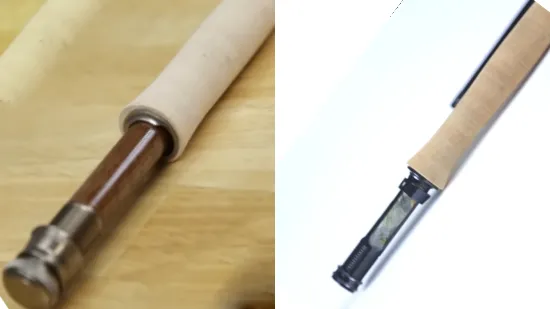
You should consider several key points when comparing the Sage ONE and Helios 2 fly fishing rods, such as:
- Construction and material
- Weight and strength
- Feel and flex
- Fishing action
- Rod durability
- Price range
Let’s talk about these differences:
1. Construction and Material
The Sage ONE features Konnetic Technology, a proprietary innovation that enhances its lightweight, responsive, and accurate characteristics. This technology aligns graphite fibers along the rod shaft, reducing lateral instability during casting.
Meanwhile, the Orvis Helios 2 utilizes advanced materials and design techniques to create a lightweight yet strong fly rod. It incorporates Orvis’s proprietary Thermoplastic Resin (TFR) coating for added strength and durability. Crafted with precision and attention to detail, it reflects Orvis’s commitment to craftsmanship.
Both fishing rods offer unique construction methods and material choices that contribute to their respective strengths and performance capabilities on the water.
2. Weight and Strength
The Sage ONE rods are slightly heavier than the Orvis Helios 2. This difference in weight can affect your casting experience, especially during long sessions. The Sage ONE’s slightly heavier construction may provide more power and stability when casting large flies or in windy conditions.
On the other hand, the Helios 2 fishing rod features a lightweight design, making it comfortable for extended casting periods. However, this lighter weight may sacrifice some power and control when dealing with larger fish or adverse weather conditions.
3. Feel and Flex
The Sage ONE is an absolute powerhouse, delivering incredible power combined with a high degree of ‘feel.’ This means that not only can you cast longer and with more precision, but you can also sense subtle takes and bites from the fish. It’s a true joy to use, feeling smooth and responsive in your hands.
In contrast, the Helios 2 has been recognized for its unparalleled sensitivity in fly fishing. Anglers report that it has an almost telepathic ability to transmit feedback from the line directly to the angler, making it easier to react to every specific situation.
4. Fishing Action
When comparing the fishing action of both rods, consider how each one performs regarding power and responsiveness. The Sage ONE is known for its fast-action or medium-fast action, which gives the angler power for long casts and accuracy.
This action allows for quick loading of the rod and a powerful release, making it ideal for casting large flies or dealing with windy conditions.
Conversely, the Orvis Helios 2 also offers fast-action rods that can generate high line speeds for longer casts. These rods excel at delivering precise presentations and have a responsive feel when fighting fish.
5. Rod Durability
Consider the advanced materials and construction techniques used in both rods for long-lasting performance and durability.
The Sage ONE features Konnetic technology, which enhances strength and durability by optimizing the carbon fiber alignment and resin distribution. This innovative approach ensures the rod can withstand the toughest fishing conditions without compromising its performance.
As opposed to this, the Orvis Helios 2 is renowned for its exceptional toughness and durability. Thanks to Orvis’s advanced materials and construction techniques, this rod is built to handle heavy loads and resist wear and tear over time.
6. Price Range
The Sage ONE is generally positioned as a high-end, premium fly rod series with prices at the upper end of the market. Alternatively, the Orvis Helios 2 is considered a high-quality series but may offer slightly more affordable options within the premium category.
Although both series are on the higher end of the price spectrum, there may be some variation in pricing between specific models and features.
What to Consider When Selecting a Fly Fishing Rod Between Sage ONE & Helios 2?
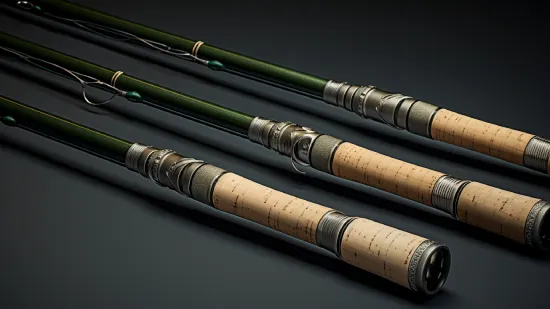
When deciding between a fly fishing rod between the Sage ONE and Helios 2, there are several key points to consider.
1. Your Budget
If you’re on a tight budget, quality fly fishing rods are still available at various price points. While it may be tempting to splurge on the most expensive option, consider that the rod plays a more significant role in your casting performance than the reel. Therefore, it’s advisable to invest more in your rod.
2. Intended Use
Consider what type of fish you plan to target and let that guide your choice of fly rod. The intended use of the rod is crucial in determining whether the Sage One or the Helios 2 is the better option for you.
If your primary interest is fly fishing in Tennessee or other areas for small trout and panfish in rivers such as the Elk River or Holston River, a lightweight 3 or 4-weight rod like the Sage One would be suitable. Its sensitive tip and smooth action allow for delicate presentations and accurate casts.
However, if your sights are set on larger trout, bass, or saltwater species, you should go with a heavier 6 to 8-weight rod such as the Helios 2. This rod offers more power and backbone for easily fighting bigger fish and casting large flies.
3. Rod Length
The rod length is one of the most crucial considerations when purchasing a fly fishing rod. Both the Sage ONE and Helios 2 fly fishing rods are available in various lengths, so choosing the right size that suits your fishing needs is essential.
A 9-foot rod balances the benefits of longer and shorter rods. Longer rods are great for roll casting, mending, and fishing with long leaders. They also excel at nymphing. However, shorter rods are more manageable and comfortable for casting in windy conditions or tight spaces.
4. Rod Action
When choosing a rod, understand how the rod action affects your casting style and fishing technique. The rod action refers to how quickly a rod recovers from flexing. There are three main categories: slow action, medium action, and fast action.
A fast-action rod is suitable for casting in the wind and for longer distances. Its quick recovery allows for more power and accuracy in your casts.
Conversely, a slow-action rod is better suited for short-distance casting and delicate presentations. It provides a softer feel and allows for more control when making precise casts.
5. Number of Sections
The number of sections in a fly rod can impact its portability and convenience for travel or backpacking, but it may also introduce slight stiffness in certain areas that affect the rod’s action.
A two-piece fly rod is generally more compact and easier to transport, making it ideal for those on the go. However, the connection between the two sections can sometimes create a stiffer area that affects the overall flexibility of the rod.
On the other hand, a four-piece fly rod is even more portable as it can easily fit into a small backpack or luggage. While this design allows for better convenience, additional stiffness may exist at each section junction.
6. Line Weight
You should choose a line weight that matches the type of fishing you plan to do with your fly rod. The line weight determines the size and weight of the fly line that can be cast effectively with your rod.
A lighter line weight, such as a 3 or 4 oz, is ideal for small streams and delicate presentations, while a heavier line weight, like an 8 or 9 oz, is better suited for larger rivers or targeting bigger fish.
Why are Sage ONE fly rods so expensive?
The Sage ONE fly rods are known for their high-quality materials and superior performance, so it is not surprising that they are more expensive. These rods are made with top-notch materials that ensure durability and exceptional casting ability.
Advanced technology in their design allows for improved accuracy and distance when casting. Compared to entry-level rods, the Sage ONE offers a significant upgrade in terms of performance.
They excel in various fishing conditions and rival higher-end rods from previous generations. Each Sage ONE rod’s attention to detail and craftsmanship contributes to its overall value.
Are Sage ONE fly rods worth the money?
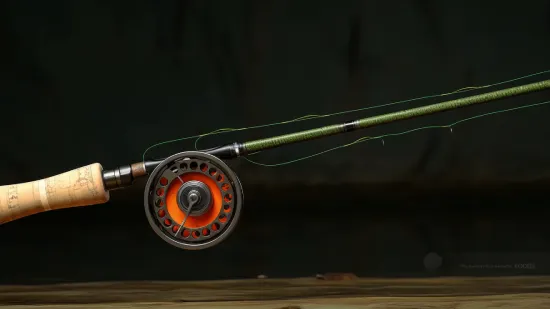
If you’re looking for a high-quality fly rod with exceptional performance, Sage ONE is worth the investment. These fly rods are known for their top-notch craftsmanship and superior materials, contributing to their higher price point.
These rods are designed to give anglers unrivaled accuracy, sensitivity, and power on the water. Both beginners and experienced anglers can depend on Sage ONE rods for optimal performance and durability.
While other options may be available at a lower cost, the quality and performance of the Sage ONE make it well worth the money.
Where are Orvis Helios’ 2 fishing rods made?
When looking for high-quality fishing rods, it’s worth noting that the Orvis Helios 2 rods are made in the Orvis Fly Rod Shop in Manchester, Vermont.
The Orvis Fly Rod Shop has a long-standing reputation for producing top-notch fishing gear, and the Helios 2 is no exception. Crafted with precision and expertise, these rods are designed to deliver exceptional performance on the water.
In addition to being made in Vermont, the Helios 2 also incorporates advanced materials and technology to ensure durability and sensitivity. The rod blanks are constructed using a proprietary carbon fiber material that enhances strength while reducing weight.
Is Orvis Helios worth it?
In order to determine whether the Orvis Helios 2 is worth your consideration, you should consider the Helios 2’s exceptional performance on the water and its reputation among advanced anglers.
This top-line fly rod from Orvis is specifically designed for experienced anglers who demand high performance. The Helios 2 features a fast-action design that allows accurate casting even in challenging conditions, such as windy weather or long distances.
It excels at punching large flies through the wind without sacrificing accuracy. Also, its lightweight construction and responsive feel make it a joy to use, allowing you to cast with precision and control.
Anglers who have used the Helios 2 consistently praise its performance and reliability, making it a worthy investment for those seeking top-notch quality and performance on their fishing trips.
Sage ONE or Helios 2: Choose the Best Fly Fishing Rod for Your Next Adventure
The Sage ONE and the Orvis Helios 2 fly fishing rods are both exceptional choices for anglers seeking top-quality rods that offer durability, sensitivity, accuracy, and power. As we have seen, each of these rods has unique strengths, providing added strength and durability.
Regarding weight and strength, the Helios 2 is known for its lightweight design, while the Sage ONE offers a slightly heavier option. Also, both fly rods provide a similar level of feel and flex and offer fast-action fishing action for longer casts.
Ultimately, testing out both rods and seeing which one feels right for you before deciding is important. So, don’t let the price tag fool you. Sometimes, you need to spend a little more to reap the benefits.

